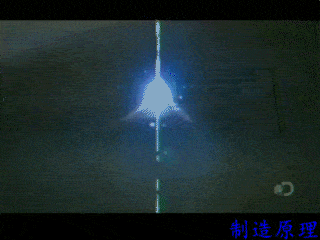

Cemented carbide welding is widely used in tools, molds, measuring tools and
In the field of grinding parts, in welding, cemented carbide is generally brazed to excellent
On high-quality medium-carbon structural steel or tool steel, due to the particularity of cemented carbide,
The improper welding method is used, and there is a tendency to produce welding cracks, especially
It is easy to produce welding cracks when welding large-size cemented carbide and steel substrate
Pattern. This article combines the problems of our company when welding large-size round cutters, and introduces how to avoid large-size carbide welding cracks Methods.
1 Welding cracking mechanism
Since the linear expansion coefficient of cemented carbide is 6 × 10-6 mm/℃,The coefficient of linear expansion of steel is 12 × 10-6 mm/℃, both have extremes.The big difference, due to the different linear expansion coefficient, makes the output when cooling after welding
Generate a lot of stress, and at the same time, the welding of cemented carbide and steel is generally used
Brazing, due to the different use environment of the product, the two materials to be welded
The characteristics are very different. If the brazing method is improper, the process
The control is not standardized, so that the stress generated during cooling after welding cannot be
It is effectively reduced, which becomes an important reason for cracks in cemented carbide.
because.
2 Analysis of the causes of cracking in the original welding method
When welding large-size carbide round cutters for the first time, due to the
The structure and characteristics of the product are not sufficiently understood, and copper-based brazing is used
Welding, manual welding, after welding, heat preservation in the resistance furnace for about 8 hours, the result is
Cracks were found when roughing the outer circle. When welding again, it appeared again
Many times the product was scrapped due to welding cracks, and the pass rate was only 20%.
Among them, 7 products were welded at one time, all of them were scrapped, and the pass rate was 0%.
The appearance of the crack is generally a radial annular crack, which occurs 3
~5mm alloy section, the length is about 6~20mm.
After analysis, the reasons are as follows:
(1) Copper-based brazing is used, and the welding temperature is too high, generally 1100 ℃ ~ 1150 ℃;
(2) The alloy is in contact with the plane of the substrate without a tank, so avoid it during welding.
It must be heated for a long time to avoid under welding, which will cause overburning of the alloy, which is very easy to manufacture
Cracks are formed, which greatly affects the quality of the product, and a large amount of excess solder overflows.
Affect subsequent processing;
(3) Manual welding is used, and the welding time and solder are not easy to control.
The heat is uneven, causing the alloy to heat up too long;
(4) No compensation sheet is added to the welding surface;
(5) Not preheated before welding;
(6) <11 The unilateral clearance between the centering part and the inner hole of the alloy is too small,
Due to the great difference in the coefficient of linear expansion between the base and the alloy during the welding process,
Cause the matrix to extrude the alloy;
(7) When welding, <11 between the centering part and the inner hole of the alloy
Welding, forming a multi-sided welding, when cooling, the axis of the main welding surface of the end face
The directional shrinkage is severely affected, and a larger shrinkage stress will be generated, so
Very easy to produce cracks;
(8) The cooling time after welding is too long, and the solder and the steel matrix interact with each other
Use, cause the solder to penetrate, have a tendency to form brittle phases, and easily cause cracks
Pattern.

Hot information

